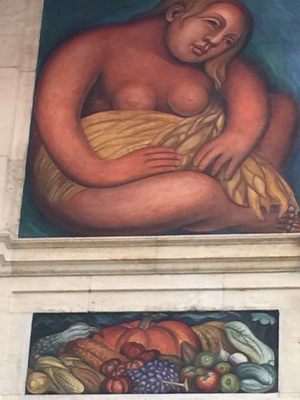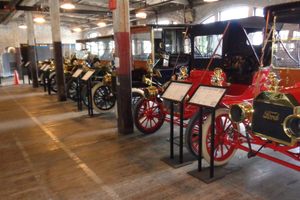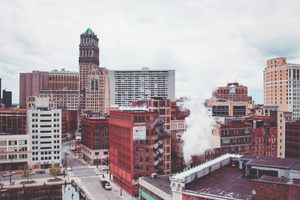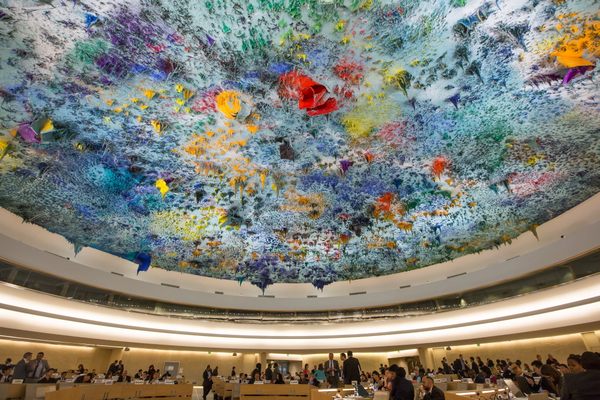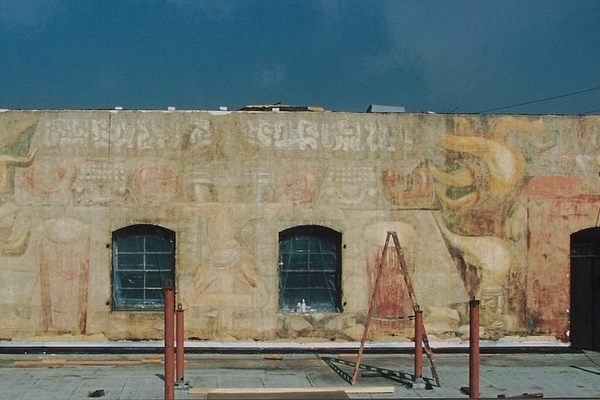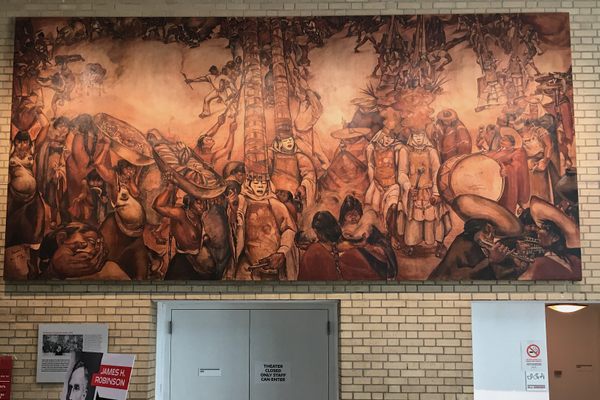About
In a city overflowing with street art, murals, and graffiti of all kinds, Diego Rivera's controversial tribute to the Detroit automotive industry still reigns supreme.
Commissioned in 1932 by Edsel Ford, son of Henry Ford and then president of Ford Motor Company, Rivera's take on big-time American capitalism simultaneously glorifies the culture of the modern factory as well as slyly savaging the men in charge (his very patrons, in fact). The project was fraught with controversy from its inception, with critics from many sides intensively analyzing Rivera's Marxist sensibilities before the project was even begun. Sure enough, Rivera crammed his mural with so many subversive easter eggs and subliminal jokes that various groups have sought to have the entire piece covered up, censored, or even destroyed entirely. It is a testament to Rivera's artistry and wit that not only does the mural remain, it is now the crowning glory of the Detroit Institute of Arts, taking up all four walls of a courtyard in the center of the museum.
Rivera was a master of the fresco, a type of mural in which paint is applied to wet plaster, allowing for bolder colors and more strongly defined forms. Rivera's frescoes depicting Mexico are celebrations of the eternal connections between man and the land he inhabits, and depict agriculture as a source of identity and pride. Approaching the Detroit commission from the same socialist perspective, Rivera depicted the Ford River Rouge facility (then one of the most advanced manufacturing facilities in the world) as an organic extension of the Detroit soil - mystical proto-human figures around the top part of the mural play with geometric shapes and scratch at the primordial soil, while below them, pistons and gears appear to grow downward like stalactites in a factory built inside a volcanic chamber. Elsewhere, masked doctors prod a haloed child with syringes in a kind of unsettling modern Nativity scene, and Henry Ford sits alone at his desk wearing a hard, and some might say weary, expression.
The series of frescoes don't seem to condemn the arch capitalist Fords outright, but neither do they celebrate them. Instead, they seem to suggest that modern industry is just as grand, bleak, and mystical as any human venture, including traditional Mexican agricultural methods. Nevertheless, the piece was hotly contested, with Detroit religious leaders demanding the piece be destroyed upon its unveiling. The museum weathered further complaints throughout the 30's and 40's, with one of Rivera's other commissioned murals (in New York's Rockefeller Center) actually being torn down for being too openly leftist in 1934. During McCarthy's "Red Scare" of the 50's, a sign was hung in front of the mural stating that Rivera, "detestable" communist though he may have been, was so impressed by Detroit's industrial prowess that he painted the mural without individual ego, aiming simply to glorify the city's achievements. Though this explanation is clearly false, it is certain that Rivera saw true creativity as well as hubris in scenes from America's industrial heartland. The many natural motifs in the frescoes seem to hint that even the most gleaming factories are still bound to the soil they are built upon, a fact which has been proven frighteningly true in Detroit's more recent past.
Related Tags
Published
July 31, 2014











